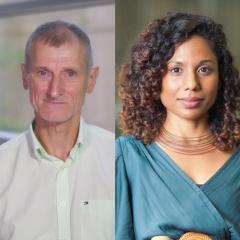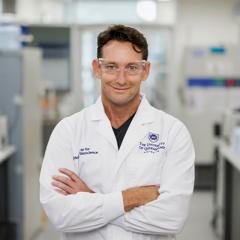Tarantula spider venom could become an unlikely ally in the war against sheep infections caused by nematode worms - a major cost for the international sheep industry.
University of Queensland (UQ) Bachelor of Biomedical Science (honours) graduating student Samantha Nixon has been investigating compounds from tarantula venom as a potential treatment for sheep parasites which lead to huge economic losses for farmers.
Ms Nixon is one of up to 3000 students graduating at 10 ceremonies at St Lucia campus from July 19 to 22.
She has been investigating a particular parasite known as Haemonchus contortus, which is an important parasite and is responsible for anaemia and the death of infected sheep and goats.
“Females may lay over 10,000 eggs a day,” Ms Nixon said.
Drug treatments are used against the worms, but increased resistance to these chemicals has caused science to look at other treatments, such as alternative chemicals and breeding strategies for resistance against the pests.”
“We desperately need novel treatments because there are only three classes of broad-spectrum drugs available to treat Haemonchus infections and our ability to treat these infections is crippled by drug resistance.
“In terms of drug resistance, Australia is the worst-affected country in the world and we lose $435 million dollars annually to treating worm infections.”
Ms Nixon’s project has looked at a variety of spider venoms.
One of these is a Brazilian tarantula venom, the active compound of which was discovered by two of her supervisors, Dr Volker Herzig from UQ’s Institute for Molecular Bioscience (IMB) Dr Andrew Kotze from the UQ School of Veterinary Science.
“A lot of my honours year has not been very glamorous – collecting sheep faeces and squishing them up to find worm eggs,” Ms Nixon said.
“I’ve also had the chance to get up close and personal with many different kinds of spiders, such as Australian tarantulas, huntsmen, orb weavers and funnel webs, but I am a bit scared of scorpions and centipedes.”
Her honours year grew from a summer research project at UQ’s Institute for Molecular Bioscience (IMB) studying tarantula venoms.
Ms Nixon said she was interested in science and biomedical science at high school when she determined she would like to work as a researcher.
During her studies, Ms Nixon received a number of awards including several Deans’ Commendations and the Faculty of Science Advanced Study Program in Science Student of the Year for 2014.
Ms Nixon will recount some of her student experiences as valedictorian at the July 19 UQ ceremony for Science, Medicine and Biomedical graduating students at the UQ Centre, St Lucia, at 2pm.
July’s 4500 graduating students include about 400 research higher degrees. Together, they bring the global community of UQ graduates to more than 236,500 - including more than 12,350 PhDs in at least 170 countries.
That community includes Queensland Premier Annastacia Palaszczuk, actor Geoffrey Rush, the founders of Wotif.com, Eurovision Song Contest runner-up Dami Im, Nobel Prize winner Professor Peter Doherty, to name a few.
Media: communications@uq.edu.au; Faculty of Science 07 3365 4043.



